Past Exhibition
Artist Projects: Sarah Cain, Avish Khebrehzadeh, and Kay Rosen
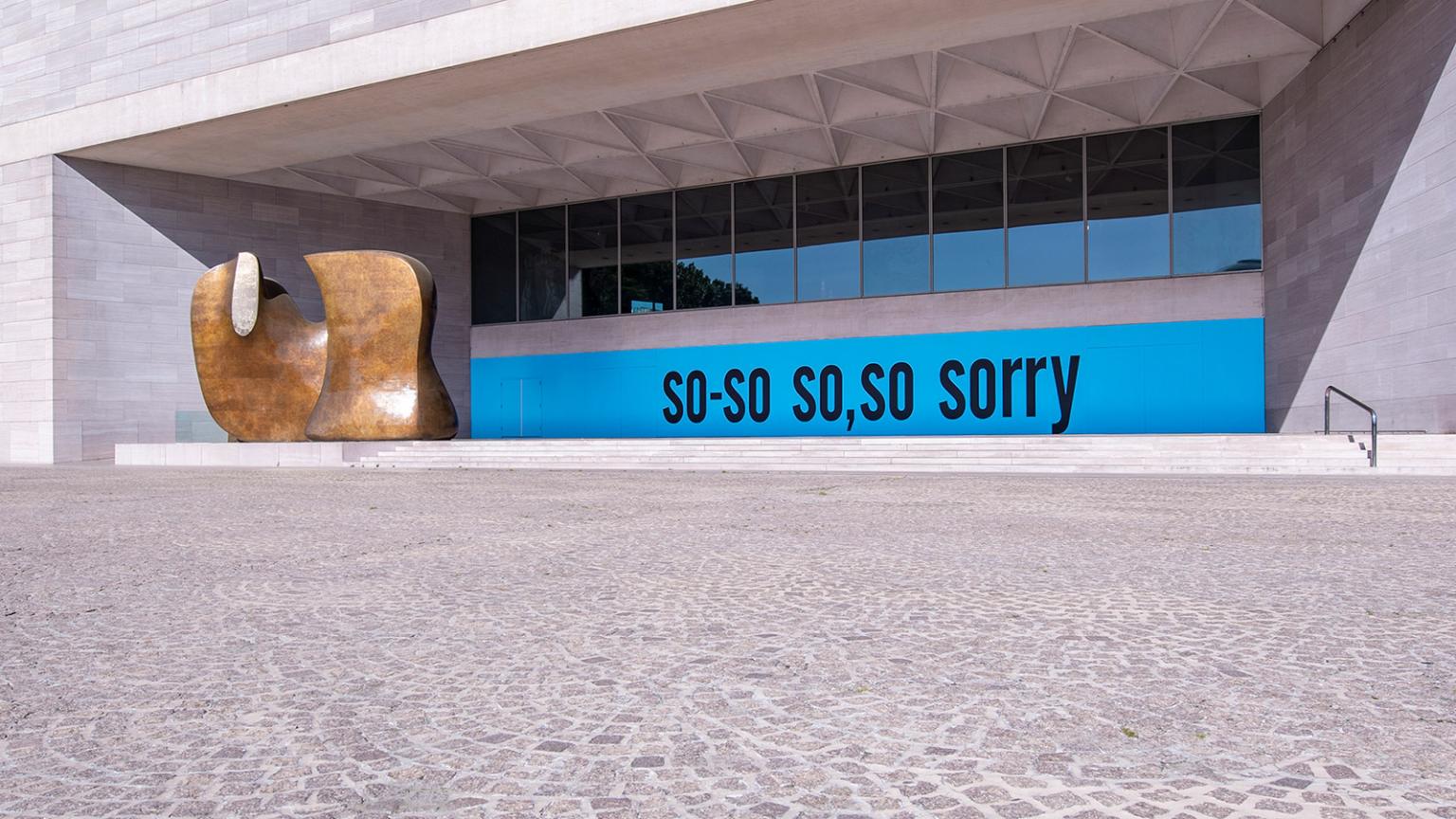
Details

Sarah Cain, Avish Khebrehzadeh, and Kay Rosen were commissioned to create special site-responsive installations for the East Building while it underwent a skylight replacement and other renovations. The three artists—all known for making works in temporary sites or architectural spaces—took advantage of construction walls and transformed otherwise empty areas into stimulating environments. Their imaginative and problem-solving talents provided innovative solutions that enlivened the building while works of art from the permanent collection were removed or covered. Through their involvement in Artist Projects, Cain, Khebrehzadeh, and Rosen introduced new ways to experience familiar spaces of the East Building.
Kay Rosen's SORRY transformed the entryway of the East Building in an unexpected way from April 10, 2021, to March 27, 2022. Sarah Cain’s installation My favorite season is the fall of the patriarchy enlivened the Atrium from June 18 to October 3, 2021. Avish Khebrehzadeh brought her poetic works Tree of Life in Blue and Seven Silent Songs to the East Building from June 18, 2021, to February 27, 2022.
Kay Rosen
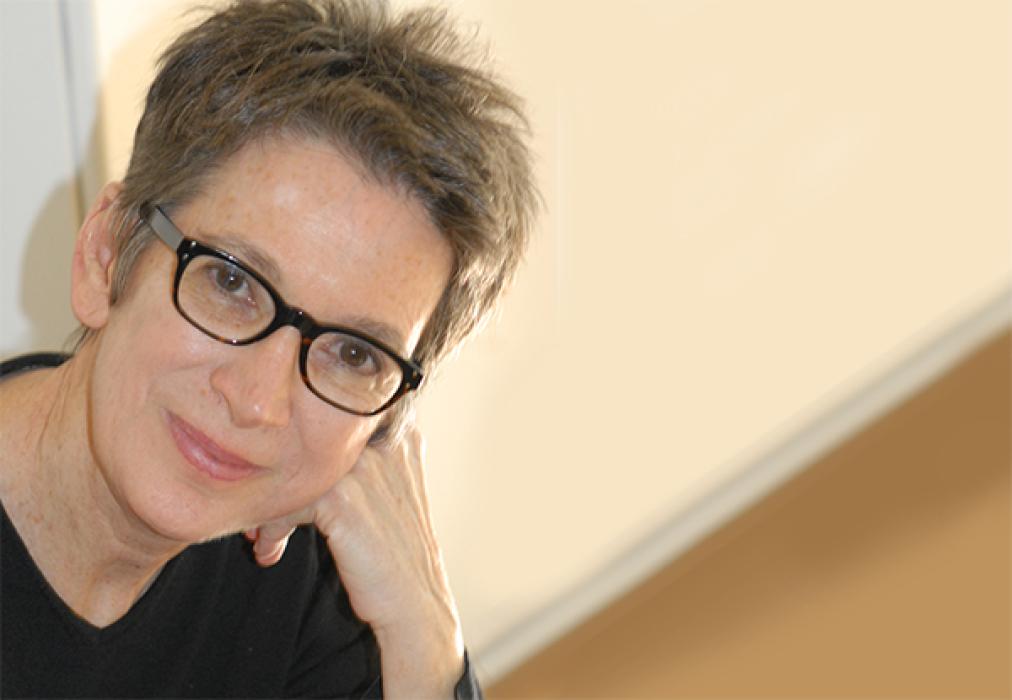
Kay Rosen
In her language-based artworks, Kay Rosen investigates how color, scale, material, composition, and typography affect meaning and structure. Her imaginative strategies challenge the way we see and interpret the texts we read. The artist created SORRY in response to the renovation of the East Building façade. She started with the word itself—an apology for inconvenience—and then isolated and repeated so. By combining the linguistic unit so with a comma and a hyphen, Rosen generates a range of expressions, from a half-hearted apology to a sincere one.
SORRY also poses bigger questions. Whose big voice might be expressing sorrow? The museum’s? The artist’s? A spiritual power’s? Who are the intended recipients of the apology? And sorry for what? The artist leaves that open to interpretation.
Rosen visited the National Gallery in early 2020 to familiarize herself with the site and to discuss the project’s initial requirements to create a text-based work that would provide wayfinding during the museum’s renovations. She considered the East Building’s location and role as a public museum, its visitors, and the rich context of current events. The artist designed all aspects of the text, including the color, spacing, font, and height, and selected the blue color for the temporary wall. A sign painter completed the artwork following Rosen’s instructions.
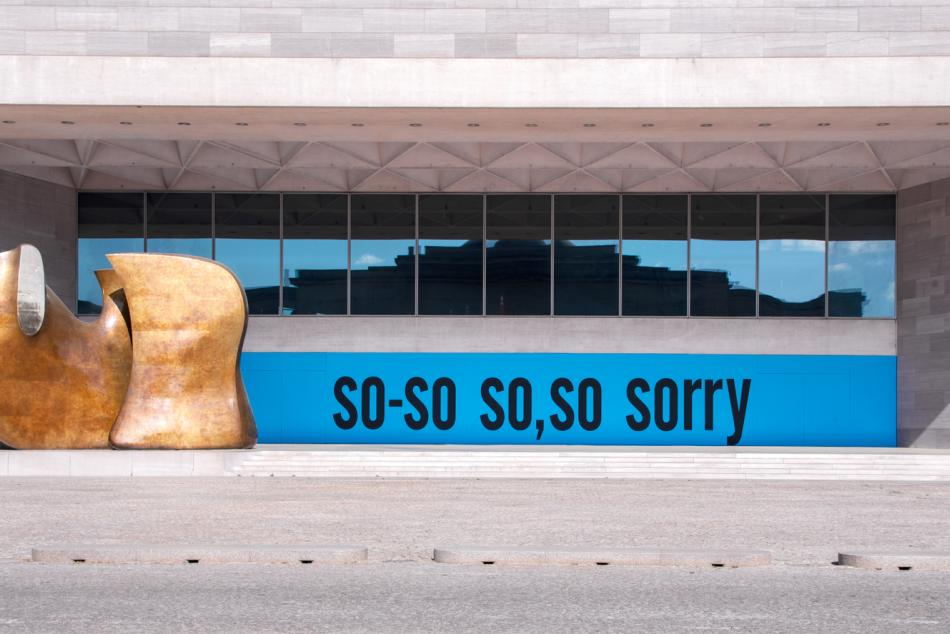
Video: Kay Rosen: Who Is Really Saying “Sorry”?
Artist Kay Rosen breaks down the linguistic play at the heart of SORRY as expert sign painters execute her installation on construction walls blocking the National Gallery's East Building entrance.
Avish Khebrehzadeh
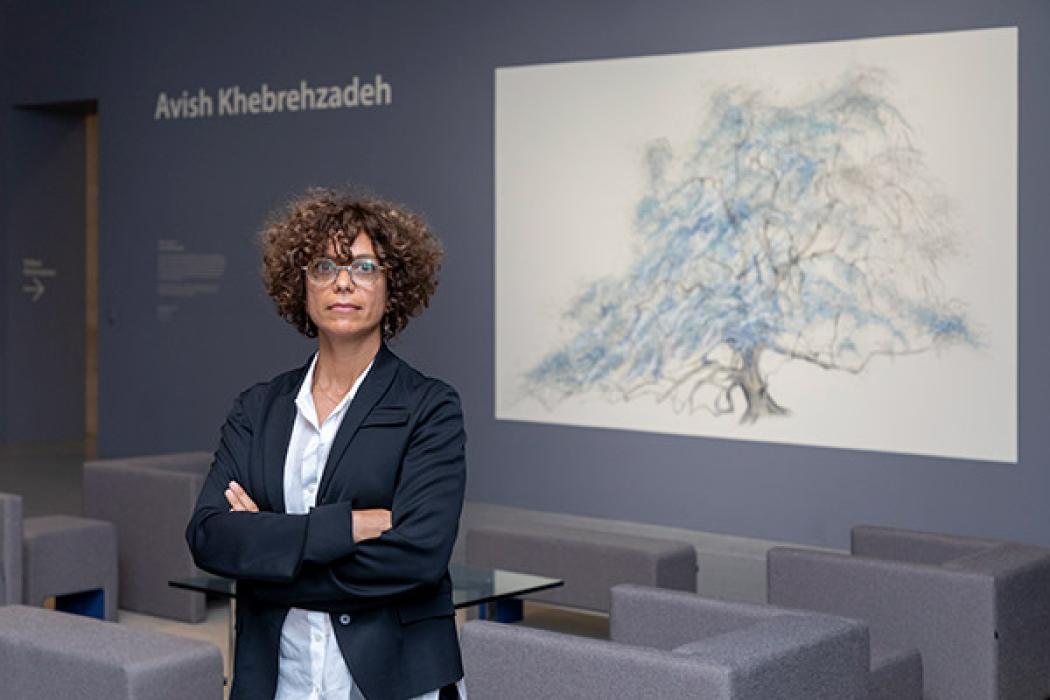
Avish Khebrehzadeh with Tree of Life in Blue at the National Gallery, 2021.
Avish Khebrehzadeh made thousands of drawings to create her animated video Seven Silent Songs. She digitized, edited, and set the drawings in motion in six linked animations that loop to make a seventh overall work. Together, the serene scenes raise questions about migration, climate change, and human nature. The processions start and end with animals. Humans are interspersed to denote balance, cause, and effect. A long line of galloping white horses, symbolizing wisdom, power, and freedom as well as the artist’s native Iran, sets the tone. In other scenes, a man drags a whale, jellyfish and a manatee swim through a fluid environment, rhinos and birds meander through a field, and military figures on stilts drag cans and chairs behind them. A peaceful flight of herons ends the poetic series.
In addition, Khebrehzadeh made A Tree of Life in Blue, a twelve-by-eight-foot drawing, directly on a wall adjacent to the video installation. Her massive tree grows from its earth-bound central trunk and extends through its vast network of branches to reach across the picture plane and toward the sky. The ancient symbol of the tree of life represents vitality and continuity, which Khebrehzadeh connotes through her choice of a blue tone to evoke sky and water. Part of the artist’s series of tree drawings, this work connects to the living creatures shown in Seven Silent Songs.
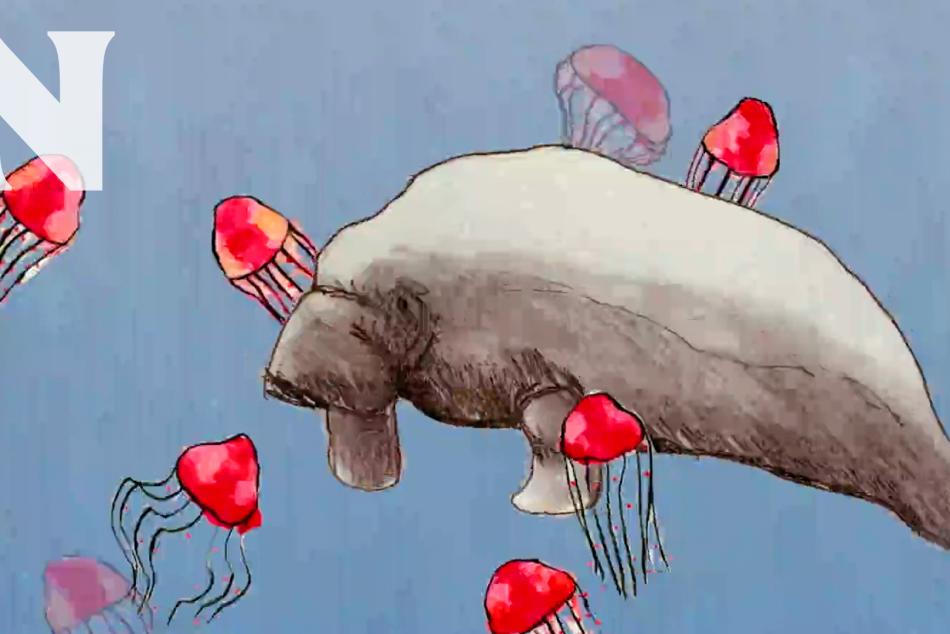
Video: Avish Khebrehzadeh’s Seven Silent Songs
Watch as Iranian artist Avish Khebrehzadeh draws the figures for her video, Seven Silent Songs, and her grand, wall-sized drawing, Tree of Life in Blue.
Sarah Cain

Sarah Cain in her Los Angeles studio with My favorite season is the fall of the patriarchy in progress, 2020. Photo: Jeff McLane
Sarah Cain’s energetic installation jumped the bounds of a 45-foot-long painted canvas to integrate a variety of surfaces in the East Building’s Atrium. Extending onto the nearby protective sculpture enclosures and well covers, Cain’s painted elements surrounded and complemented the canvas to create a dynamic installation that encouraged movement and close looking. To the canvas, the artist applied sculptural elements of torn, cut, sewn, draped, and beaded sections, with additions of silver and gold leaf and paint rollers, inviting discovery and drawing from wide-ranging sources. The title of My favorite season is the fall of the patriarchy was lifted from a coffee mug. In the installation, Cain generated a flow of abstract moments between hard-edged shapes that traversed an atmospheric spray-painted backdrop to create a riotously colored work dynamically playing between painting and sculpture.
Initially, Cain had planned to paint directly on the temporary walls and enclosures on site. When the pandemic prevented her travel, she adapted her approach. After painting seven eight-by-seven-foot canvases in her Los Angeles studio, she then shipped them to the National Gallery, where they were installed across the long wall. The artist also oversaw (via video) National Gallery staff who painted three protective sculpture enclosures and three planter well covers. These structural elements surrounded and complemented the painting, which floated in an energized arena animated by Cain’s bright palette.
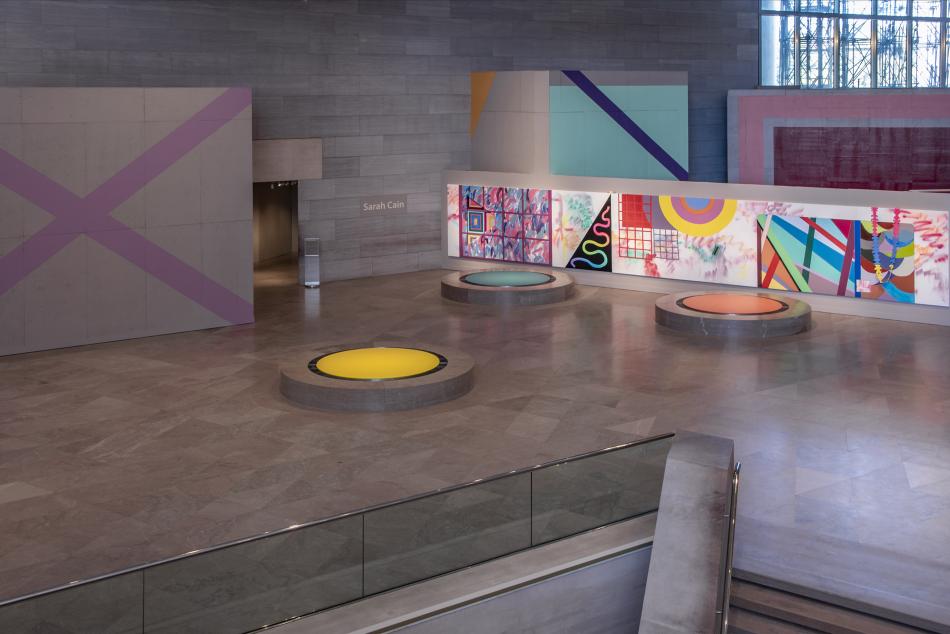
Video: Sarah Cain’s Favorite Season
Sarah Cain talks about how fierce feminism and humor infuse her work My favorite season is the fall of the patriarchy.
Organization: The installations are organized by Molly Donovan, curator of contemporary art, and Paige Rozanski, curatorial associate in the department of modern and contemporary art, both of the National Gallery of Art, Washington.
Sponsors: The installations were made possible by the Bernstein Family Foundation and The Tower Project of the National Gallery of Art, Washington. Additional in-kind support for the production of Seven Silent Songs was provided by Daniel Sallick and the Subject Matter Agency.
Banner detail: Kay Rosen (American, b. 1943), SORRY, 2020–2021, paint on construction wall, Courtesy of the Artist and Sikkema Jenkins & Co.




